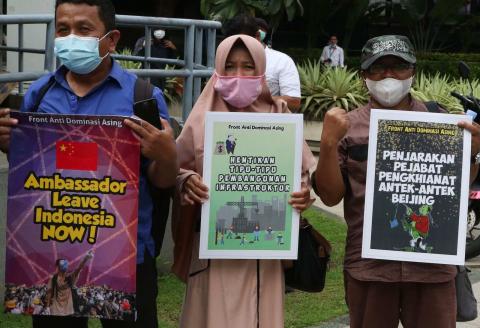The conflict in the Philippines’ city of Marawi has now claimed the lives of 100 people, and President Rodrigo Duterte is committed to his May 23 imposition of martial law for the entire southern island of Mindanao (in which Marawi is located). In the face of a newly-united radical Islamist opposition, Duterte appears to be trying to build a coalition of his own between government forces and various separatist groups. However, it is unclear if such an alliance will materialise, given these groups’ concerns with Manilla’s declaration of military rule. Moreover, the degree to which the President’s current strategy can effect lasting positive change in Mindanao remains uncertain.
Since last week, the Armed Forces of the Philippines (AFP) have been fighting an amalgamation of two distinct radical Islamist groups: Abu Sayyaf and the Maute group. Isnilon Hapilon, an Abu Sayyaf leader, pledged his loyalty to the Islamic State (IS) in 2014, while the Maute group explicitly aligned itself with IS somewhat later, in 2016. On May 23, government forces attempted to capture Hapilon in Marawi, but encountered joint resistance from both Hapilon’s forces and members of the Maute group, which sparked the current conflict. In March of this year, Sidney Jones wrote on The Interpreter that the relatively recent alliance-building between Hapilon, the Maute group, and other IS-aligned organisations enables more unified opposition to the government in the southern Philippines. The Marawi crisis would seem to be bearing out this claim. The Philippines’ leaders must accept that they are engaged in conflict with a newly-organised enemy that presents a more focused threat.
Duterte’s recent actions suggest that he believes a good response to united opposition is some unorthodox alliance-building of his own. Over the weekend, Duterte offered an olive branch to the Moro National Liberation Front and Moro Islamic Liberation Front (the MNLF and MILF, respectively) the largest and most established groups that have fought the government for increased autonomy for the Philippines’ Moro Muslim minority. Unlike Abu Sayyaf and the Maute group, neither Moro group has aligned itself with IS. Duterte proposed that fighters from the two groups could receive pay and other rewards for fighting alongside the AFP against Abu Sayyaf and the Maute group. The AFP in turn would benefit from the separatists’ battle experience and knowledge of local terrain.
Duterte claims to have received a pledge of 5000 troops from MNLF leader Nur Misuari, but there have been no corresponding claims from Misuari himself. A May 29 meeting with MILF leaders appears to have been productive; MILF leaders welcomed the idea of their troops being used to support civilians trapped in Marawi, but did not make explicit troop commitments. Moro group leaders may oppose Abu Sayyaf and the Maute group, but they may also be concerned that Duterte will turn on them under the auspices of martial law, perhaps after the threat from IS-aligned groups dissipates.
The President also called for military cooperation from the New People’s Army (NPA), the armed wing of the Communist Party of the Philippines (CPP), which has been leading its own nation-wide, anti-government insurgency centred in Mindanao. On Monday, one of the group’s key advisers said that the NPA is opposed to Abu Sayyaf and the Maute group’s violence against civilians, and expressed interest in cooperating with the government in the conflict in against Abu Sayyaf and the Maute group. However, the Duterte administration recently backed out of the fifth round of ongoing peace talks with the communists after the CPP called on NPA forces to attack government troops imposing martial law in Mindanao. Given these mixed messages, government cooperation with communist militants is far from a sure thing.
The MNLF and the MILF have been engaged in peace talks with the government for decades, though these talks have moved slowly, with intermittent interruptions from outbreaks of violence. Meanwhile, a ceasefire agreed to in July 2016 between the government and the communists collapsed completely in February of this year. As mentioned above, the negotiations that have occurred since have been fitful at best.
Duterte’s new openness to rebel groups may represent a break from these groups’ troubled peace negotiations with the government. However, it would be dangerously naïve to presume that Duterte’s recent actions will bring about a lasting brighter future for Mindanao. Malcolm Cook of the Institute for Southeast Asian Studies points out that Duterte already declared a national state of emergency in September after a Maute-linked bombing in Mindanao’s Davao City – and yet this was not sufficient to prevent the Marawi conflict. A recent editorial in Rappler, a Philippines news website, similarly notes that 'It [martial law] plays to our penchant for shortcuts, until it hits home. It makes us forget the real problems that have made terrorists thrive in the region.'
There are many obstacles to Duterte’s ambitious goal of an AFP-NPA-MNLF-MILF coalition. And even if such an alliance comes to fruition, it should not be seen as a means to achieving lasting peace in the southern Philippines.

